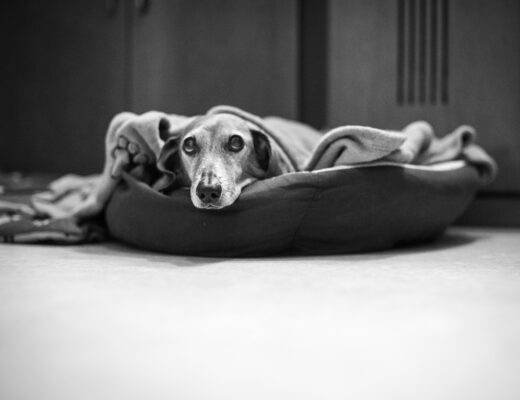Since my last couple of articles were about camera settings and post-production set-up, today I really wanted to go back talking about photography. Among the various shootings I did this month (January was, luckily, pretty busy) I’m deciding for a shot in particular, because it has a nice story behind, but also because it allows me to talk a bit about how I move from scouting a location to actually planning and then producing a piece of work with models, stylists, make-up artists, etc.
The story of this shot starts at Rome’s fashion week: AltaRoma (29th-31st of January). This year’s edition has been busy, gorgeous, extravagant, and quite innovative, developed to introduce the “new generations” of stylists. The venue chose to host such an event was also unique: the Ex-Dogana, an old building, almost in ruin, part of the city railroads, that once was the customhouse. This place has such huge, ex-industrial environments that it feels being in Brooklyn, New York, more than in Rome. A perfect scenario for a fashion week that wanted to distance itself from the usual cliché of ancient luxury, typical of Rome, and go more into the youth culture and underground fashion movements.
I was invited to exhibit five of my fashion works there, all done with the X100T by the way, some of which I talked about and published in Fujilove. During my stay I had the chance to meet with a few stylists, models, and the people in charge of organizing events and activities in the Ex-Dogana. So, beside enjoying fabulous fashion shows, I created enough contacts to organize a shooting in the Ex-Dogana for the week after AltaRoma.

the old depots as they were after AltaRoma was dismantled
The first thing I did was to get back to the location once the fashion week was over so to scout for possible settings now that they were empty. I brought along the X100T and the X-T10, with the teleconverter and the 56mm. This way I had the equivalent focal length of a 35mm, a 50mm, and an 85mm, and I was able to assess all the possible perspectives and point of view in each room. That took me a couple of hours at most.
For the purpose of this article I’m going to talk about, and show, only one scene, the one in the old depots. I loved the perspective of this room from one particular angle. The size of the room obliged me to use the 35mm equivalent of the X100T in order to get the full “play” of the three, consecutive, white rooms.
Back at home I went chatting with the stylist, Vincent Wood, showing him the shot of the depots. We went through his clothing at Handsome Grunt and I suggested we might use the red fur to add a note of intense color to the whiteness of the scene, together with some of the bamboo plants I had seen in the location, to add a complementary color. Once I put together the fur, the bamboos, and the big white room, it all made me think about an abandoned museum. I liked the idea and decided to create a mood around it. Vincent called the make-up artist, Angelica Muciaccia, and explained her what we had in mind.
A couple of days later we were at the Ex-Dogana. There were Vincent, the stylist, Angelica, the make-up artist, and Sofia Vigliar, the model. Sofia is a wonderful actress and model which has been willing to participate to one of my shootings since quite some time, but with very little luck, since she’s usually too busy being somewhere far in the world for her job. That week she was in Rome, so we finally made it. I also brought three assistants: my wife Claudia and two other photographers, Paola Soldi and Giacomo Meiarini. The last addition to the team was Carlotta Giauna, the representative for the Ex-Dogana and director of Disertori, and the one who introduced me to Vincent during AltaRoma. So we were eight people in total. Quite a little crew.

by Paola Soldi. The room dedicated to the make-up and equipment storage.

by Paola Soldi. Angelica at work on Sofia.
First of all we dedicated a room for the make-up and equipment storing. This way none of it would be in the way while setting-up the scene, and we wouldn’t disturb the make-up process. Then, together with my assistants, I started cleaning the room and setting up the scene, the flashes, and eventually bringing in the plants. That one in particular was a tough job, and I can’t thank Paola and Giacomo enough for doing it without ever complaining. We also removed the wooden element that was originally in the middle and put in its place a silver-ish element we found behind the corner.

the old depots after cleaning and changing the wooden stand with the silver-ish one.
For this shot I mixed natural light (coming for the high windows, you can see it as the stripes of light hitting on the walls in each room) and artificial light. I set the shutter speed at 1/125th so to get the flash light, the aperture at f/4, so to get a bit of out-of-focus on the last room in the background, while the ISO was chosen so to get the proper exposure of the natural light. It came out ISO400, which is more than fine. I could have reduced to ISO further by prolonging the shutter speed, but as you’ll see I had in mind a pose for the model difficult to hold, so I really needed a fast shutter speed to avoid any blurring due to model shaking, which the natural light hitting the room would have shown otherwise.

the old depots with plants and flashes.
Because of the bamboos, I wanted to create a light that would remind of a tropical environment, with some greens and yellows spreading on the walls. I wanted it to look like the sun was reflecting on the wet foliage. It’s particularly visible on the left side of the room. For complementarity, and to warm up the scene a little bit, I added some red spreading on the right side of the room, like there was some bark or red curtains there reflecting the light of the sun.

by Paola Soldi. I’m fixing the sofbox on the model. You can see how the flashes and the camera are placed and pointing (there’s a glimpse of a flash on the left side too).
I used four flashes, with a mix of gelatins between green, yellow, and red, depending on where they were hitting. I used a softbox for the light directly aiming at the model, while the other three flashes were aimed at the white walls, so to bounce their light back in the room and fill it as evenly as possible.
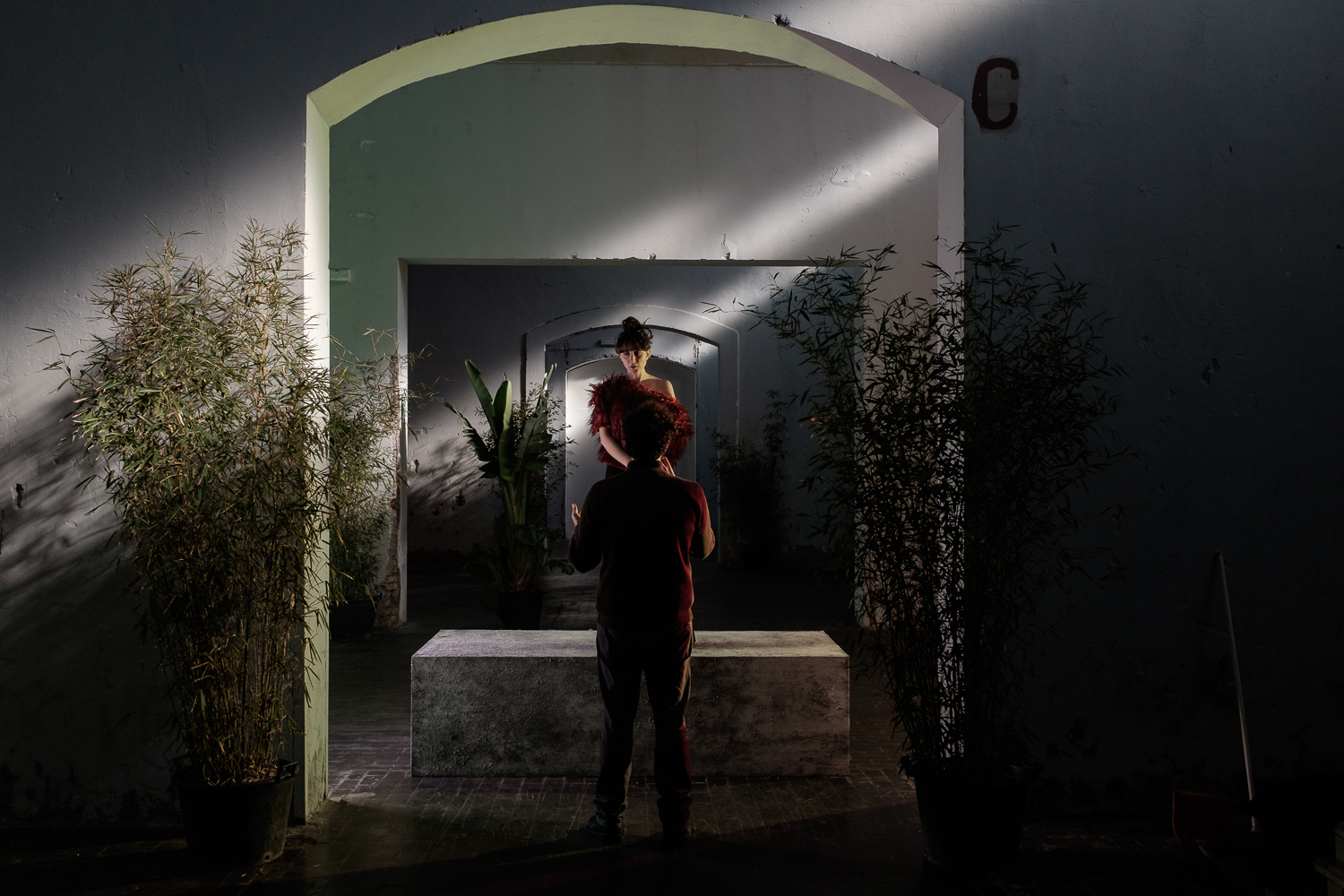
I’m explaining the mood to Sofia. She tried a few poses before I decided alone she wasn’t enough and I had to add the chair to the scene.
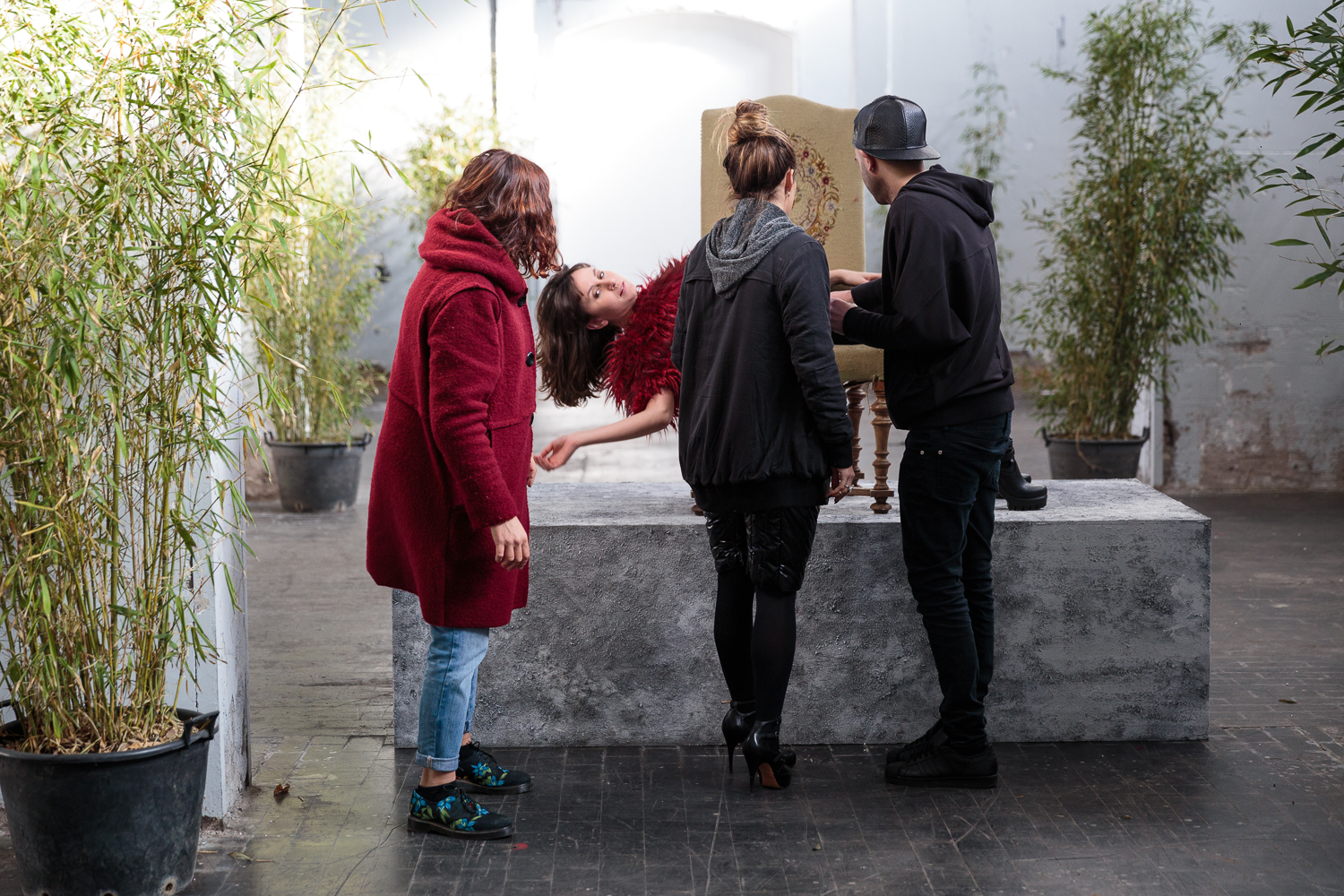
by Paola Soldi. Stylist and make-up fixing the model with the new pose on the chair.
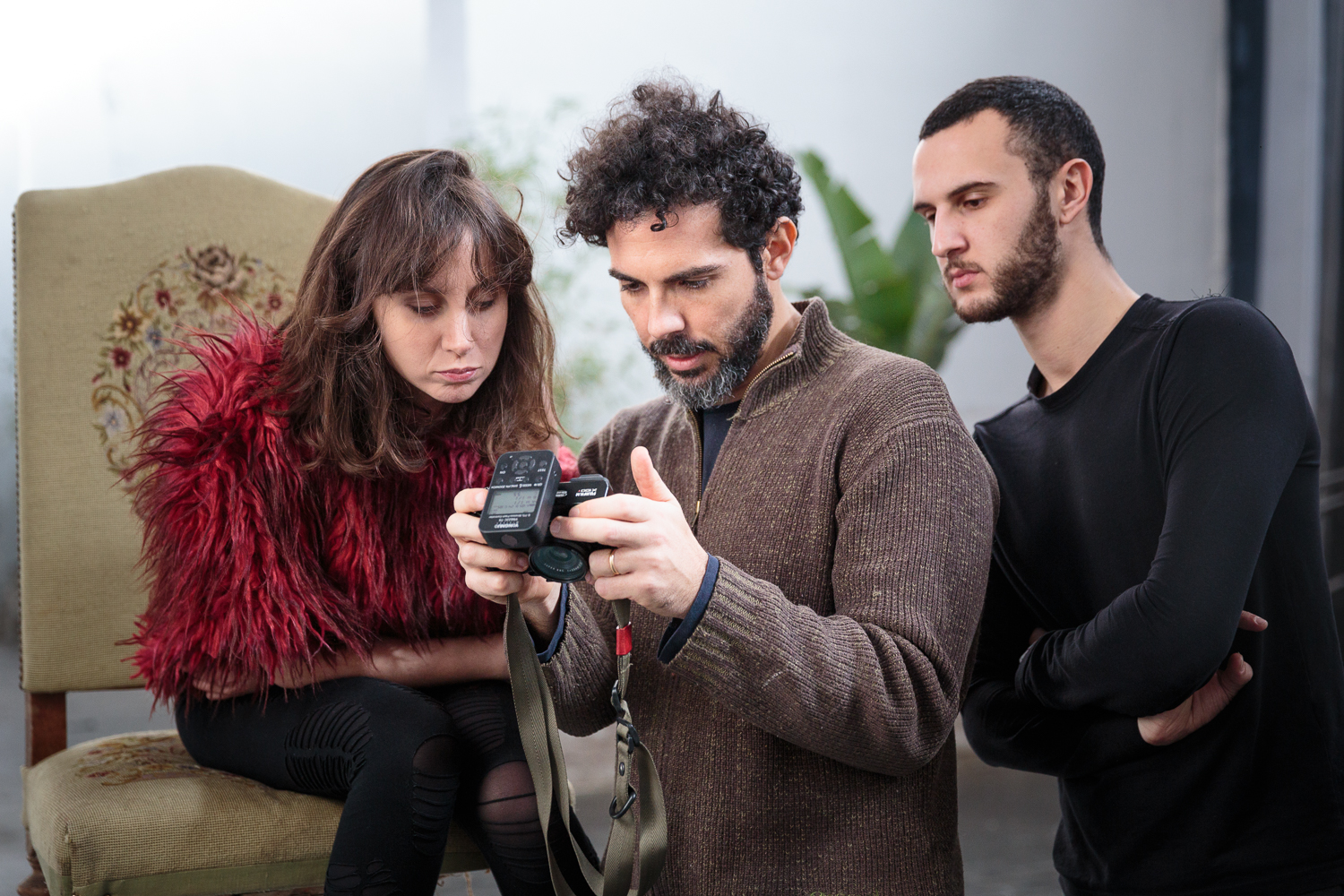
by Paola Soldi. Showing Sofia what works and what doesn’t with the new pose.
Then I had Sofia in the room, standing on the central stage, while I started explaining what that was about. This is a really central part of the creative process. In my experience, all that has be pre-planned comes down to how actually the model, and the clothes, occupy and interact with the scene. Sometimes I’m lucky and everything works the way I imagined it, but others it does not, and the shooting itself becomes part of the creative process. This was one of those times. Alone, Sofia wasn’t enough to “justify” her presence in the space. I added the chair. And once that was in the scene, everything else found quickly its fit. A last touch of make-up, a little tweaking of the fur, the I showed Sofia what I had in mind, and we finally got it.
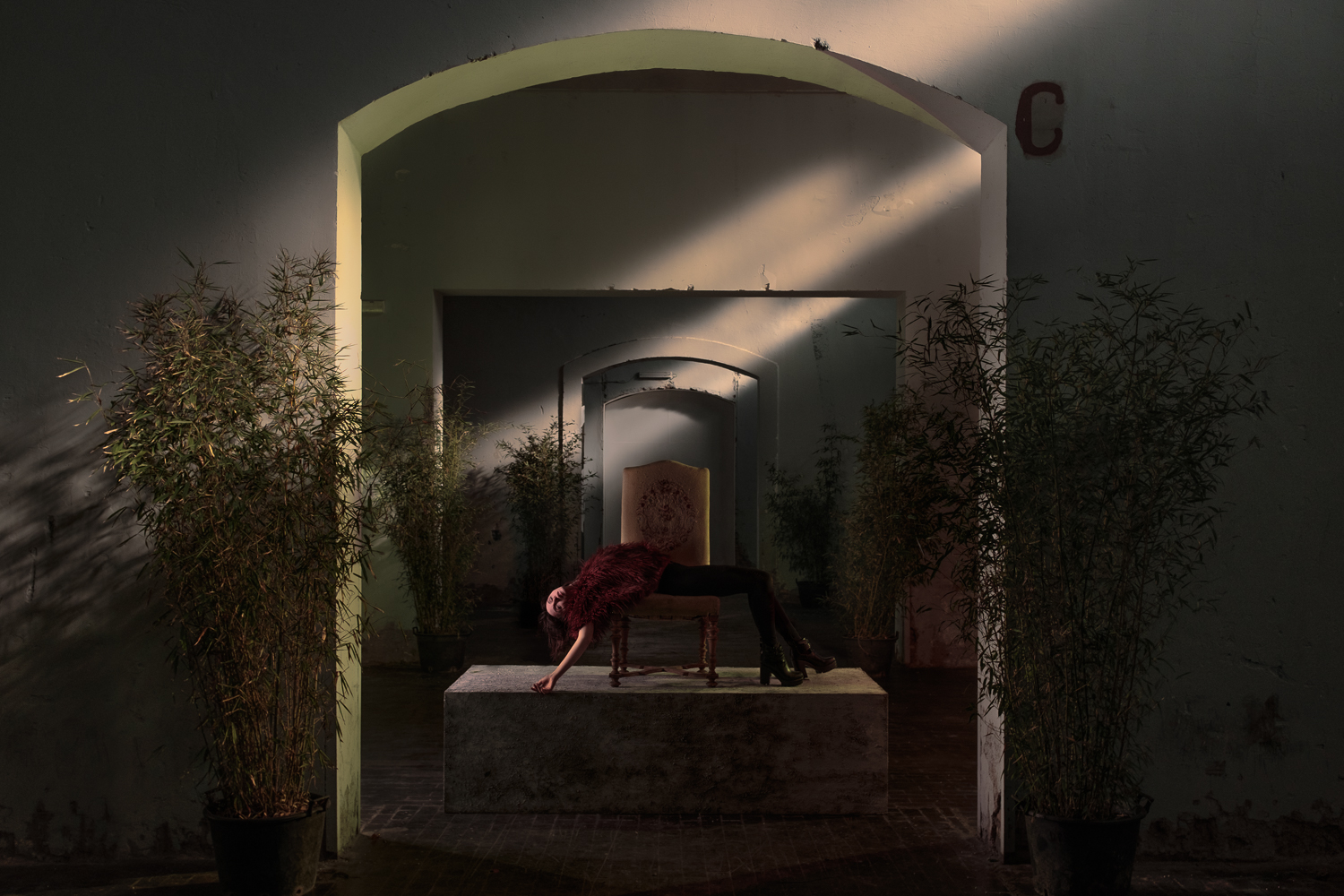
The post production here, done with both lightroom and photoshop, is a mix of opening blacks and shadows, increasing highlights and whites, while at the same time reducing exposure and contrast. The idea is to show the details in the shadows while keeping a low-key feeling on the overall image. The title of the article refers to the title of the image: “and he walked on down the hall”. It’s a citation of a verse of “The End”, the song from “The Doors”. The tension, stillness and purity of this image made me think about the song, so I dedicated it to it. I’ve been a big fan of The Doors for years, and The End is my favorite song of them, and one of my favorite songs overall.


